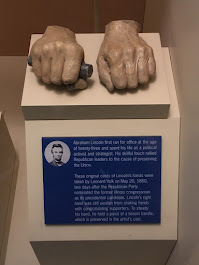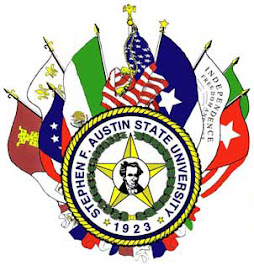My wife and I traveled to Washington D.C. a couple of weeks ago during Spring Break. After visiting the massive, vibrant collection of museums our nation's capital has to offer (the African American history and culture museum was fantastic and enriching!), we stopped by Ford's Theatre, the site where Pres. Abraham Lincoln was shot. In this blog post, I will shed light on the 1865 assassination and Baptist Alley, the secret route John Wilkes Booth took to escape the theatre.
Initially, John Wilkes Booth, a renowned D.C. actor and southern sympathizer, had planned to kidnap the president and use him as a Confederate bargaining chip. However, after Gen. Robert E. Lee surrendered his army to Gen. Ulysses S. Grant on April 9, 1865 at Appomattox Court House, VA, Booth and his group of conspirators decided to assassinate the president, vice president (Andrew Johnson), and secretary of state (William H. Seward). Since Booth regularly performed at Ford's Theatre (located a few blocks away from the White House) and had an intimate knowledge of the layout of the building, the actor decided to shoot Lincoln there. On the night of Good Friday, April 14, the president and First Lady Mary Todd, arrived at the theatre fashionably late with their guests, Major Henry Reed Rathborne and his fiancee Clara Harris (U.S. Grant and his spouse had been invited yet turned down the invitation at the last minute due to family matters). After a thundering applause from the audience at about 8:30 pm, Lincoln and his guests sat down on plush furniture in the presidential box (appropriately decorated with American flags and a portrait of George Washington) to enjoy the night's comedic production, Our American Cousin.
After a couple of alcoholic beverages at the saloon next door, Booth crept up to the presidential box (on the right side of the theatre) during Act III, Scene 2, and barricaded himself inside. Lincoln's lone security guard was occupied (enjoying the show or drinks at the saloon, stories differ) and did not see Booth enter the box. The actor slowly opened the box door, aimed his little deringer at the back of Lincoln's head, and when the audience below exploded in laughter - Harry Hawk on stage exclaimed, "you sockdologizing old man-trap!" - he fired one shot at 10:35 pm. Lincoln rolled his eyes and slumped forward as the first lady screamed. When Booth emerged from the pistol smoke, Rathborne leapt at the actor. Booth, armed with a Bowie knife, slashed the major's arm and jumped from the box to the stage, twelve feet below. The attack from Rathborne that was not planned scared Booth, and the assailant's boot spurs caught the flags. The audience, stunned and confused at the chain of events, witnessed Booth raise his bloody knife, shout "Sic Semper Tyrannis" (thus always to tyrants), and hobble off the stage with a broken leg.
While much commotion and panic erupted in the theatre, Booth reached the rear exit door at the back of the facility (during the planning of the attack, he knew he'd have no chance on exiting the theatre through the front entrance). There, a stagehand that he had hired earlier to look after his bay mare, was waiting for him with the reins in hand. Lincoln's assassin jumped into the saddle and galloped away, clubbing the stage worker in the head for good measure. The alleyway where Booth made his escape was called Baptist Alley in 1865 since Ford's Theatre had previously been home to D.C.'s 10th Baptist Congregation. Booth traveled down the alley at top speed, passing a number of stables and horses, prior to exiting the premises at 10:39 pm, less than five minutes after he shot the president. He quickly left the city with an accomplice, traveled to Virginia to nurse his leg at Dr. Samuel Mudd's residence, and was shot by the U.S. Army after a twelve-day manhunt. Despite killing the president, Booth's plan failed and the South grieved the death of our nation's savior (I would highly recommend reading Martha Hodes's book Mourning Lincoln, which gives us insight to how our the nation reacted to Lincoln's death). The area around Ford's Theatre and Baptist Alley underwent many decades of neighborhood improvement and redevelopment after the 1865 assassination. The theatre's interior was used as a government warehouse in the latter half of the 1800s, and the rear wall was rebuilt following a collapse in 1893. The stables in the alley are now long gone and a muddy street has been replaced by concrete. Although Baptist Alley was not officially labeled on a map, my wife and I found the alley entrance and envisioned the frantic escape of Booth. Shivers crawled down our backs. I stepped back, snapped a photograph, absorbed the moment, and shed a tear, knowing that I was walking in the footsteps of a villainous brute who murdered one of my favorite presidents...
 |
| Floor plan of Ford's Theatre in the 1860s. Note Baptist Alley in the rear. Ford's Theatre Archives. |
Since Baptist Alley is not an official street, many D.C. residents and tourists walk past this infamous alley without blinking an eye. For all my history friends out there - the alley is located on F Street between 9th and 10th Streets.












